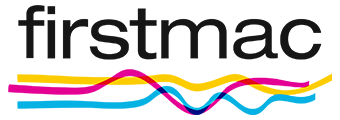What is a green loan?
A green loan is a type of financing specifically designed to fund projects that have clear environmental benefits. Unlike traditional loans, green loans must be used exclusively for initiatives that contribute to sustainability, such as financing energy-efficient homes or purchasing electric vehicles (EVs).
What can I use a green loan for?
Here are some of the most common and approved uses for a green loan:
Electric vehicles
One of the most common uses of a green loan is for buying an electric vehicle. Specifically tailored for low-emission or zero-emission vehicles, green car loans often come with perks such as access to lower interest rates, reduced fees or flexible repayment terms to encourage more sustainable transport.
Borrowers may also benefit from government incentives or state-based EV subsidies, which can further reduce the overall cost of ownership.
Solar energy
Green loans can also make the transition to solar energy more accessible for homeowners and businesses. A solar green loan can cover the cost of purchasing and installing solar panels, inverters, battery storage systems, and even solar hot water units.
Energy-efficient home improvements
In Australia, green loans can also be used to fund a wide range of eco-friendly renovations, including:
-
Installing double-glazed windows or improved insulation to reduce heating and cooling needs
-
Upgrading to energy-efficient appliances or LED lighting
-
Replacing old heating and cooling systems with high-efficiency heat pumps or smart climate controls
-
Fitting water-saving fixtures like low-flow taps, showerheads, and dual-flush toilets
What are the advantages of a green loan?
The demand for green financing is expected to grow more significantly as governments, businesses, and households target more sustainable practices.
Some key benefits of taking out a green loan include:
Lower interest rates
Many lenders offer discounted interest rates for green loans as an incentive to support eco-friendly initiatives. This means borrowing for sustainable projects often costs less over time compared to standard personal or car loans.
Reduced energy costs
Projects financed through green loans, like solar energy systems, insulation upgrades, or energy-efficient appliances, can lead to long-term savings on electricity and water bills. These upgrades often pay for themselves over time through lower ongoing expenses.
Environmental impact
Green loans directly support the transition to a low-carbon economy. By funding renewable energy, electric vehicles, or sustainable building improvements, borrowers play an active role in reducing greenhouse gas emissions and conserving natural resources.
Increased property value
Homes and commercial buildings with energy-efficient features or solar installations are often more attractive to buyers and renters. Green upgrades can boost property value and improve a building's environmental performance rating.
Eligibility for incentives and rebates
In some cases, green loan-funded projects also qualify for government rebates, tax benefits, or local incentives, such as stamp duty concessions for EVs, further improving the return on your investment.
How much can you save with a green loan?
The amount you can save with a green loan mainly depends on the lower borrowing costs when compared to traditional loans and the long-term cost reductions tied to the green investment.
For example, if a personal loan has an interest rate of 9% p.a., and a green loan for the same amount offers a rate of 6% p.a., that 3% difference can translate into hundreds or even thousands of dollars saved over the life of the loan.
If you borrow $20,000 over 5 years:
-
At 9% p.a., you will pay around $4,887 in interest
-
At 6% p.a., you will pay around $3,199 in interest
With a green loan, your total savings will be $1,688.
On the other hand, when you use a green loan to fund energy-saving upgrades or invest in clean technology, your ongoing costs can drop significantly over time.
For example, installing solar panels can reduce your electricity bills by 30-70%, depending on the system size, your household's energy usage, and the local feed-in tariff rates.
Similarly, making the switch from a petrol-powered car to an electric vehicle (EV) can result in annual savings of around $1,000 to $2,000 on fuel and maintenance, as EVs are cheaper to run and require less servicing.
How to apply for a green loan
Each lender may have different lending criteria and documentation to confirm that your project or purchase meets environmental eligibility requirements.
To qualify for a green loan in Australia, most lenders will require that you:
-
Are 18 years or older
-
Are an Australian citizen or permanent resident
-
Have a regular source of income
-
Have not declared bankruptcy
-
Have a clean credit history
-
Meet the lender's credit risk profile, based on your credit score
In addition to the usual information required for a personal or business loan, green loans may also require these additional proof:
-
Quotes or invoices for approved green products or services (e.g. solar systems, EVs, energy-efficient appliances)
-
Project plans or proposals, including budgets and expected outcomes
-
Photos or documentation showing the current state of the site, where applicable
-
Proof of purchase or technical specifications for the green product or upgrade
The goal is to show your lender how the funds will be used and how the investment aligns with green loan criteria.










